




Introduction to Urinary System
Have you ever thought about how waste products are removed from our bodies? How so naturally and smoothly the entire various processes happen in our body is just so magical. We drink about 3-4 litres of water in a day and also we eat different meals. There is also some undigested food so how do that undigested food and other waste is thrown out from our bodies? After drinking a lot of water we rushed toward the restroom. Why so? The answer to all such questions is provided by the detailed study of the Urinary System which is quite useful to perform the process of excretion and it looks like so as shown in the next topic explained below.
Diagram of Kidneys and Bladder
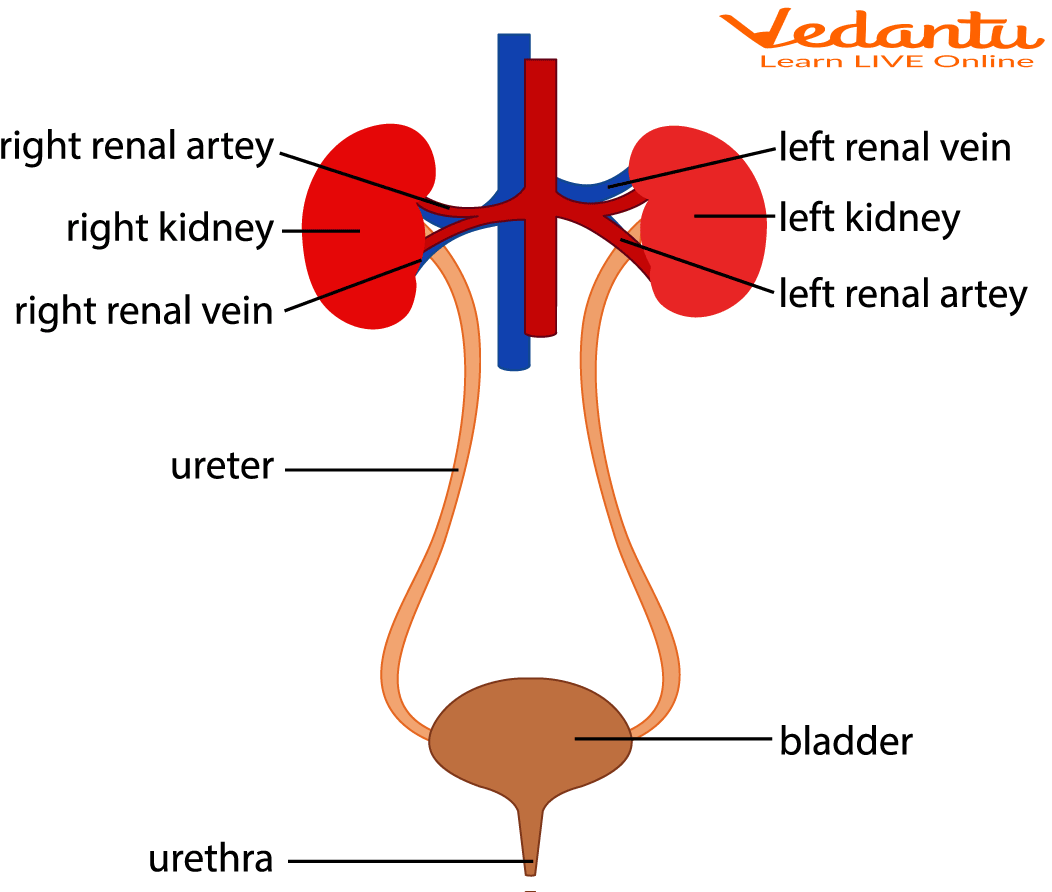
Urinary System in Humans
The organs that make urine and remove urine and other fluid waste from the body are known as the Urinary System. It is also known as the urinary tract or renal system. This system filters the blood, removing waste and excess water. This waste becomes urine.
The urinary system works as a filter, it uses a series of tubes and ducts to pass out waste. This system helps the rest of the body to work properly. This system filters the blood to get rid of what our body doesn't need. It eliminates extra water and salt, toxins, and other waste products. The elimination of urine is essential to remove the waste and thus regulate the balance of the body and it also maintains blood pressure.
Adults eliminate about 27 to 68 fluid ounces per day based on a daily fluid intake of 68 ounces. This triangle-shaped, hollow organ is located in the lower belly. It is held in place by ligaments that are attached to other organs and pelvic bones.
Different Parts of the Urinary System
Different parts of the urinary system perform different roles and thus work as a system. Let’s study its parts:
Kidneys
The kidneys are a pair of bean-shaped organs that filter the blood and make urine, a human body has two kidneys, one on either side of the back of the abdomen, just below the rib cage. Each kidney is as big as a human fist. Each kidney is 3 centimetres thick, 6 cm wide, and 12 cm long. The main role of the kidney is to maintain homeostasis. They manage fluid levels and electrolyte balance.
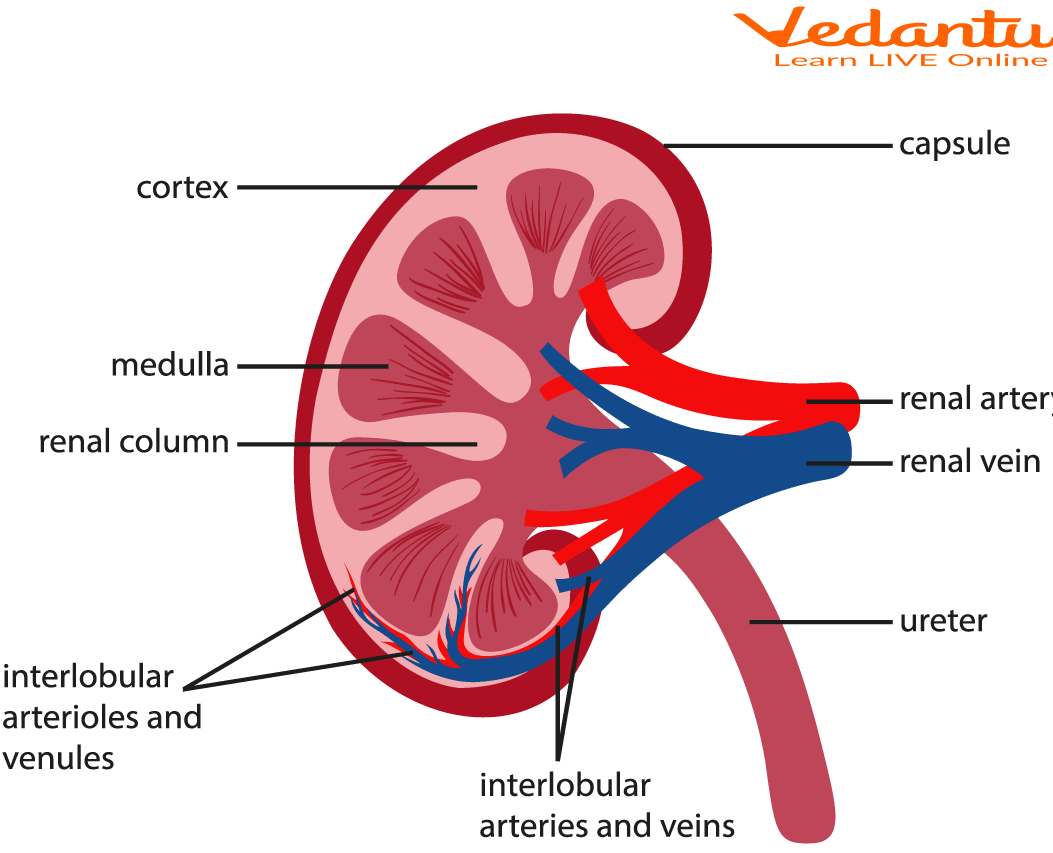
Structure of Kidney
Ureters
These are two thin tubes inside the pelvis which carry urine from the kidneys to the bladder. Each ureter is a small tube about 25 cm long. Muscles in the ureter walls tighten and relax to force urine down and away from the kidneys. The ureters work constantly emptying urine into the bladder about every 10 to 15 seconds. The ureter begins at the ureteropelvic junction of kidneys which lie posteriorly to the renal vein and artery.
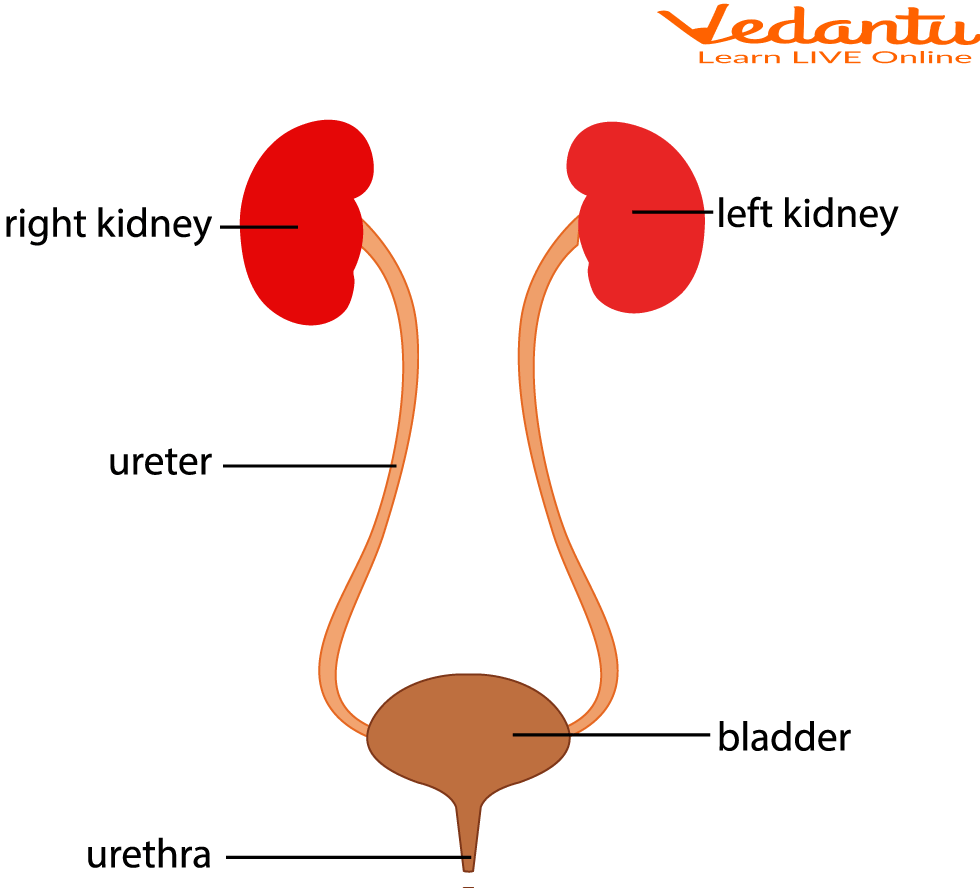
Position of the Ureter in the Urinary System
Bladder
The bladder holds urine until it's ready to empty. It’s hollow, made of muscle, and shaped like a balloon. Mostly it can hold up to 2 cups of urine. Urine enters the bladder via the ureters and exits via the urethra.
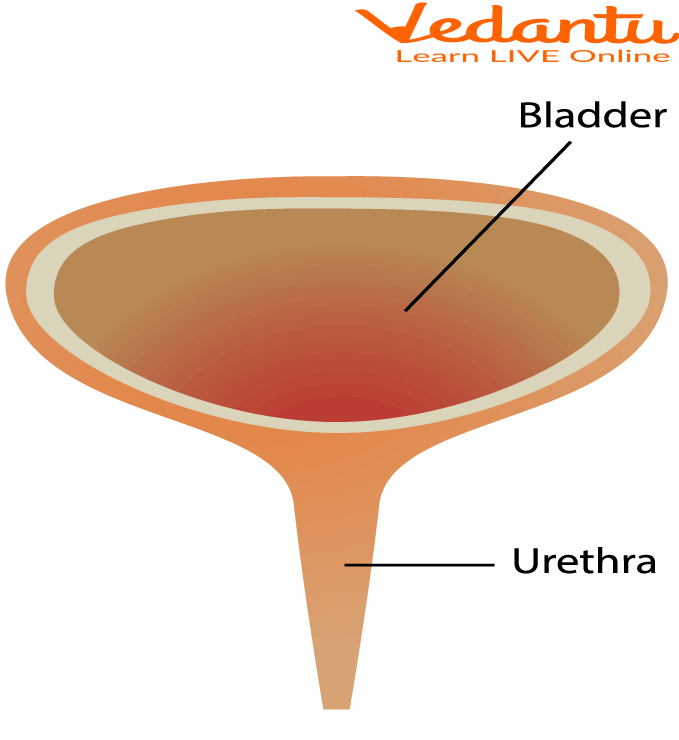
Structure of Bladder
Urethra
This tube carries urine from the bladder out of the body. It ends in an opening to the outside of the body in men through the penis and in females through the vagina. It is thin and fibromuscular in nature.
Function of Urinary System
The functions of the Urinary System are as follows:
Kidney: Regulates blood volume and composition, regulates pH, produces 2 hormones and excretes waste.
Ureters: transfer the kidney's urine to the bladder.
Urinary bladder: Keep pee and release it through the urethra.
Urethra: discharge urine from the body.
Female Urinary System
Women's urethra and bladder are not related to the reproductive system. Females have a much shorter urethra, which is about 1.5 inches long. The urethra extends through the neck of the bladder, internal and external sphincters, and the urogenital diaphragm. Urine infections are common in women because of the opening of the ureter, and the small distance between the anus and the vagina. The sole function of the female urethra is to transport urine from the urinary bladder to the extracellular space.
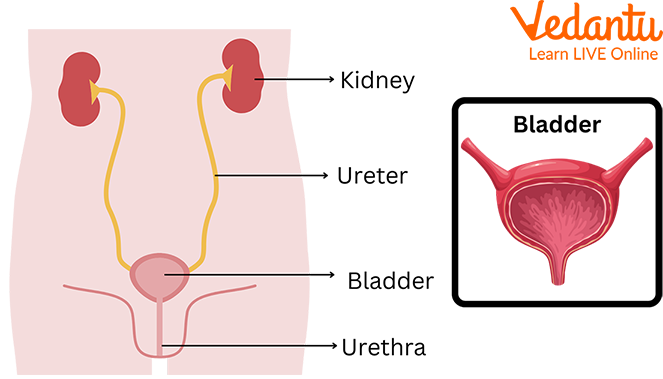
Female Urinary System
How Does the Urinary System Work?
The Urea is carried in the bloodstream to the kidney, which removes urea from the blood through tiny filtering units called nephrons. Each Nephron consists of a ball formed of small blood capillaries called the Glomerulus and renal tubule. From the kidneys, urine travels down to the ureters to the bladder from where the urine is ready to go out of the body.
Some Interesting Facts about the Urinary System
The colour of pee is due to a pigment called urochrome.
The human bladder can stretch to hold about 400ml of urine.
Nerves send signals to the brain with this indication we feel the urge to empty the bladder.
If one kidney fails to function and can be removed survival is possible even with one kidney which increases in size by 50%.
Urine is diluted and if added to potted plants in the garden acts as a source of nitrogen to plants.
Summary
We can conclude that urine is stored in the Bladder. Normal healthy urine is a pale straw or transparent yellow. The darker yellow colour indicates that we should drink more water. The brownish colour may indicate a liver problem. Urinary system stores and secretes out the urine as a waste product. We should maintain hygiene so as to maintain the proper functioning of the urinary system. The urinary bladder is made of several distinct tissue layers.
FAQs on Urinary System
1. What is the urinary system?
The urinary system, also known as the renal system, is the body's primary drainage system for removing liquid waste and excess water. It consists of organs that produce, store, and eliminate urine. Its main purpose is to filter waste products from the blood and maintain the body's fluid, electrolyte, and pH balance.
2. What are the primary organs of the urinary system and their functions?
The urinary system is composed of four main organs, each with a specific role:
- Kidneys: A pair of bean-shaped organs that filter waste from the blood to produce urine.
- Ureters: Two thin tubes that carry urine from the kidneys to the bladder.
- Bladder: A muscular, hollow organ that expands to store urine.
- Urethra: The tube through which urine is expelled from the bladder and out of the body.
3. What are the main functions of the urinary system?
Beyond just waste removal, the urinary system performs several vital functions to maintain homeostasis. These include:
- Waste Excretion: Filtering out metabolic wastes like urea and uric acid from the blood.
- Blood Volume and Pressure Regulation: Adjusting the amount of water excreted to manage blood volume.
- Electrolyte Balance: Regulating the concentration of essential ions like sodium, potassium, and calcium.
- pH Regulation: Maintaining the acid-base balance of the blood by excreting or conserving ions.
4. What is the role of a nephron in forming urine?
The nephron is the microscopic functional unit of the kidney, and each kidney contains about a million of them. Urine formation in the nephron involves three key steps: glomerular filtration (where blood is filtered), tubular reabsorption (where essential substances are returned to the blood), and tubular secretion (where additional wastes are moved into the filtrate).
5. How do the kidneys regulate the body's water balance?
The kidneys regulate water balance through a hormone called Anti-diuretic Hormone (ADH). When the body is dehydrated, the pituitary gland releases more ADH, which signals the kidneys to reabsorb more water back into the blood, resulting in concentrated, darker urine. Conversely, when the body is well-hydrated, ADH levels drop, and the kidneys excrete more water, producing diluted, pale urine.
6. Why is urine typically yellow in colour?
The yellow colour of urine is caused by a pigment called urochrome, also known as urobilin. Urochrome is a waste product formed from the breakdown of haemoglobin from old red blood cells. The intensity of the yellow colour indicates hydration level; dark yellow suggests dehydration, while pale or light yellow indicates sufficient hydration.
7. Where is urine stored, and how much can it hold?
Urine produced by the kidneys is transported through the ureters to be stored in the urinary bladder. The bladder is a hollow, muscular, and elastic organ that can expand significantly. An average adult bladder can comfortably hold between 400 to 600 millilitres of urine before the urge to urinate is strongly felt.
8. Why is drinking enough water crucial for urinary system health?
Sufficient water intake is vital for the urinary system because it dilutes waste products in the urine, making them easier for the kidneys to flush out. Proper hydration helps prevent the formation of painful mineral crystals known as kidney stones and reduces the risk of developing urinary tract infections (UTIs) by regularly flushing bacteria out of the urinary tract.
9. How is dialysis related to the urinary system?
Dialysis is a medical procedure used when the kidneys can no longer perform their function, a condition known as renal failure. It artificially mimics the primary function of the kidneys by using a machine to filter waste products, excess salt, and extra water from the blood. This process is essential to sustain life when the natural urinary system fails.
10. What are some common disorders of the urinary system?
Several health issues can affect the urinary system. Some of the most common disorders include:
- Urinary Tract Infections (UTIs): Bacterial infections that can occur in any part of the system, most commonly the bladder and urethra.
- Kidney Stones: Hard deposits of minerals and salts that form inside the kidneys, which can be very painful to pass.
- Glomerulonephritis: Inflammation of the tiny filters in the kidneys (glomeruli), often caused by an immune response.









